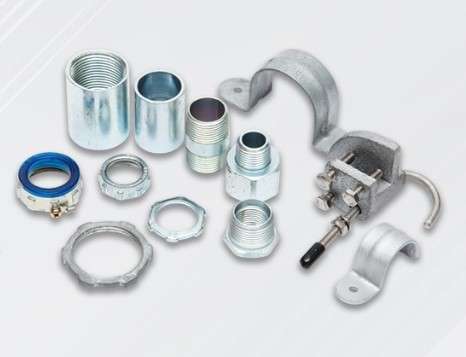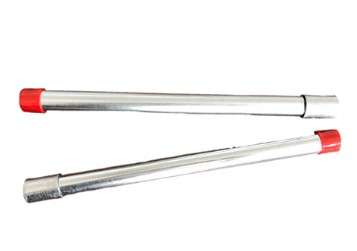
Analysis of the Main Influencing Factors of the Trend of Gi Conduit in 2020
1. The changes in the growth rate of real estate investment and new construction are consistent with the rhythm of the thread price operation
In the first four months of 2020, the cumulative growth rate of real estate development investment and new construction area has steadily increased, and both reached their highest value in April in April.
Among them, the cumulative growth rate of real estate development investment completion from January to April reached 11.9% year-on-year, and the year-on-year data of real estate development investment completion in March and April reached the highest point in the year of 11.98%; the cumulative growth of new housing construction area from January to April The speed reached a high point of 13.1%, and the growth rate of new housing construction area reached the highest value of 18.06% in March, and fell slightly to 15.5% in April. The overall level remained high. Driven by the peak season demand of gold, silver and silver, inventory degraded Relatively smoothly, the price of gi conduit fluctuated higher.
From May to November, the accumulative growth rate of real estate development investment continued to decline except in September, and the growth rate of new housing construction area continued to decline except for the rebound in October. Under the influence of the downward investment growth rate, the overall price of thread spot in May-October showed a downward trend. The growth rate of new housing construction in October reached a new high of 23.23% in the year, and it fell by 2.88% in November, which was the first negative growth since November 2018. Corresponding to this, the price of gi conduit rose sharply in November. In December, it turned into a shock and fell again.

2. The automotive industry experienced a sluggish performance in the first three quarters and gradually recovered in the fourth quarter, which had a significant impact on steel prices
In 2020, the performance of the automotive industry was relatively sluggish, and the growth rate of production and sales continued to grow negatively year-on-year. From January to November, the total automobile output was 22.858 million units, a year-on-year decrease of 9.6%, and the total automobile sales were 23.11 million units, a year-on-year decrease of 9.1%. The sluggish performance of the automotive industry also made steel prices weaker than the screw thread most of the year.
However, since the second half of the year, the performance margin of the automobile industry has improved, and the year-on-year decline in sales has narrowed. From January to June, the year-on-year decline in automobile production and sales has decreased by 14.2% and 12.4%, respectively, and the decline has narrowed to less than 10% in November. Especially in November, automobile production achieved a year-on-year increase of 3.8%, which was the first positive monthly increase since July 2019, which is also an important reason for the overall performance of steel prices at the end of the year.
3. The impact of environmental protection production restrictions and transportation new policies, there are still periodic disturbances to steel mill production and steel prices
The continuous strengthening of environmental protection production in 2019 has become the main logic affecting the trend of steel prices. With the update of environmental protection equipment of steel mills in 2020, the impact of environmental protection production limitation on the supply side has also weakened, and price of galvanised steel conduit have mostly returned to the demand side. However, there are still two strong environmental protection production restrictions in 2020, which will disturb the steel price trend. First, at the end of June, the government required a 20% blast furnace production limit for steel mills with a performance rating of class A. The remaining steel mills had a production limit of not less than 50%. The blast furnace required griddle furnaces to stop production, triggering market expectations of supply-side contraction, driving gi conduit Prices rose to the highest level in the year. The second is that before and after National Day, the production restriction policies in various places continued to increase, and the impact on molten iron before and after the festival was close to 4 million tons, which caused a strong wave of steel plate to rise before the National Day.
In addition to environmental protection and production restriction policies, the New Transport Policy has also disrupted the supply of finished materials. The October Wuxi Viaduct incident has tightened national overload control, freight rates have increased sharply in many places, and logistics has been tight. Supply and demand mismatches have occurred in threads and hot coils from November to December. . In November, the demand for thread in East China and South China exceeded expectations. Northern timber resources could not go south on time due to logistics constraints. The thread resource specifications in the southern market were very short. The price of Guangzhou thread once rose to a high level of 4900 yuan/ton for many years. The price of Hangzhou thread also rose to The annual high of 4,200 yuan/ton. The high price of the thread attracted the preferential shipping of the thread in the northern ports, and there were few hot coil shipments. As a result, the hot coil inventory in the southern market continued to decline in December. The shortage of resources and terminal replenishment led to a strong rise in gi conduit prices in December.




